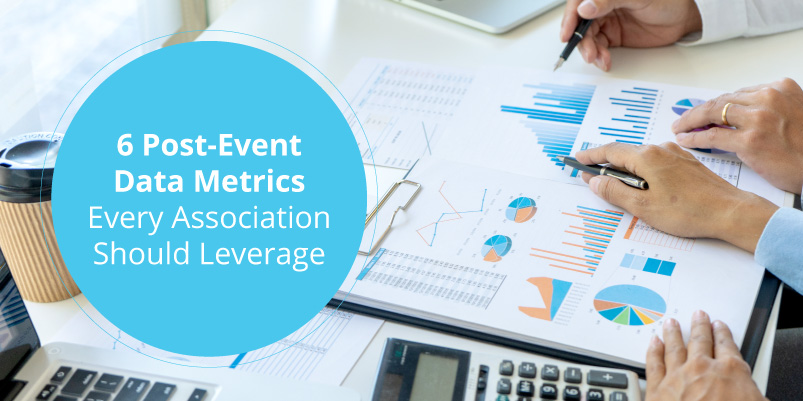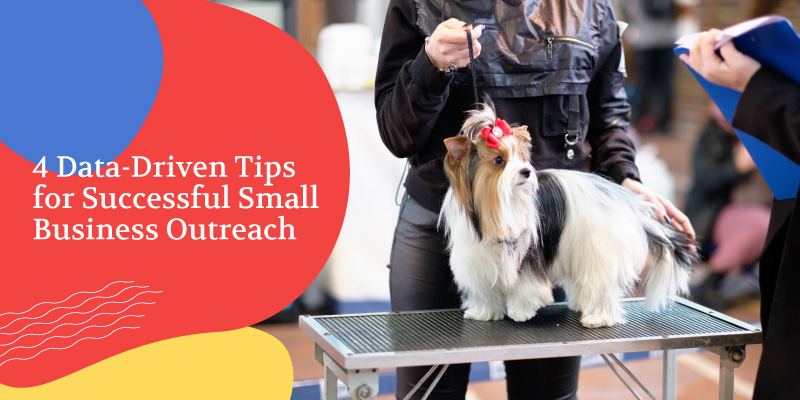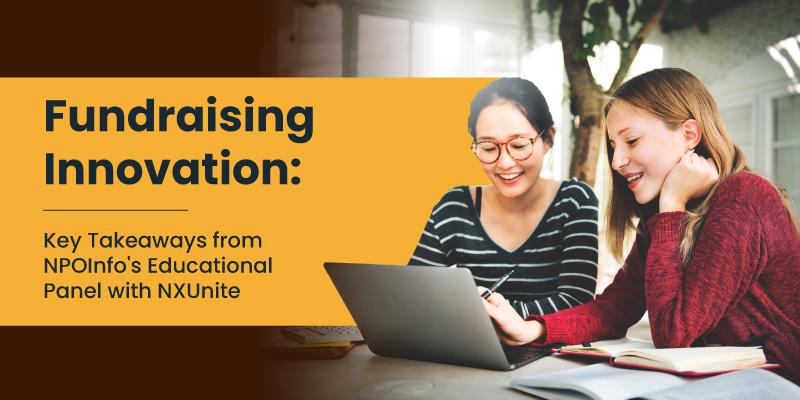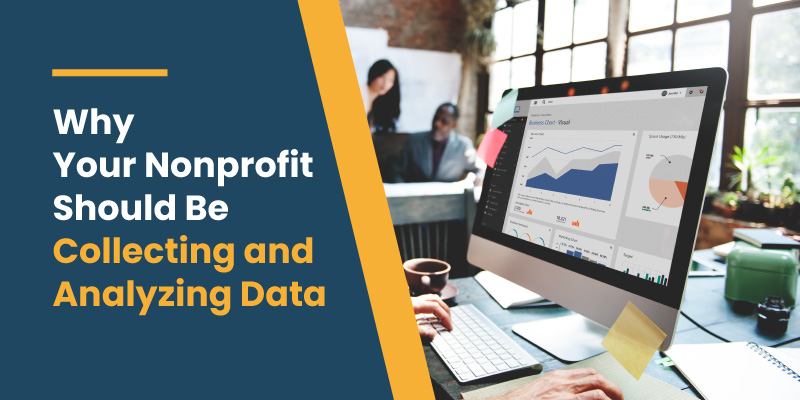6 Post-Event Data Metrics Every Association Should Leverage
Your association planned for months, coordinated with members and vendors, and the event was a hit! Even if an event goes according to plan, there are likely still areas of improvement. From enhancing attendance to increasing member satisfaction with the event to determining if you should use hybrid or virtual events, there are a plethora of data points to evaluate when it comes to planning your next event.
In this article we’ll discuss six post-event metrics your association can use to analyze event performance, make recommendations for the future, and maintain proper data hygiene.
1. Attendance Records
One of the best indications that an event started off strong is that all your registration spots were filled. A successful event begins far before the event day, when your association opens registration and begins promoting it. You’ll want to assess how quickly registration filled up and the time periods when the most registration forms were completed. This can give you some indication as to which marketing campaign strategies were most successful, as well as the time period when most people are willing to commit to an event. When thinking about general attendance records, be sure to compare your most recent data to previous events and years to evaluate if there are any overlapping patterns present.
You’ll also want to compare the number of registrants with the number of attendees, as this can help you plan for similar gaps in your future events and leave room for more attendees to register. Similarly, you’ll want to see if there was a drop off in attendance during multi-day events, or even session to session. This can help you determine if there are specific topics or speakers that attendees are more or less eager to engage with.
2. Membership attendance
Depending on the size and purpose of the event, it may have attracted industry peers outside of your association membership’s pool as well as current members. According to Fonteva’s member engagement guide, events can be key in getting members involved with your association, which is essential to improving retention rates.
While events are a great way to gain new members, current member attendance and satisfaction should be a key focus in your event analysis. Consider the following questions when assessing member event attendance:
- What percentage of attendees were members?
- How many members of your association registered?
- What percentage of your total membership attended?
- Was the event attended more by a specific group within your association?
- Are there any common demographics or interest areas among members who did attend?
- How many members registered but did not attend?
You can use your membership directory to send out post-event surveys specifically for members after the event. Tracking members’ feedback and implementing changes in response can boost retention rates by helping you cater to their interests, make events more engaging, and create a more positive member experience.
3. Satisfaction Rate
Within the satisfaction survey, vary the questions to give attendees an opportunity to express how they felt about the overall event. By leaving questions open-ended and avoiding leading questions, you’ll get more accurate responses and more useful data. Include short answers, multiple choice, yes/no, and scaled questions within the survey.
Here are some examples of questions to ask attendees about your event:
- How do you rate your experience at this event on a scale of 1-10?
- Would you recommend this event to a friend or colleague?
- Was this event what you expected? Why or why not?
- Which sessions or speakers stood out to you?
- Was there anything you felt was missing from this event?
While asking questions can provide valuable feedback for your association, keep the survey relatively short to encourage more responses. This survey is also a helpful way to confirm you have attendee contact information correct in case there are any contact appends needed for your member directory. In addition to sending association members a post-event survey, you can also create separate surveys for registrants who did not attend to determine if there is a common factor in the lack of attendance.
4. Session analytics
Events are a valuable opportunity for association members to engage with fellow professionals in their field, learn from industry leaders, and get involved with your association’s programs. To continue providing these valuable experiences, it’s important to ascertain what parts of events members find most appealing and helpful.
If you’ve hosted a virtual or hybrid event, look at how many individuals tuned in to a keynote speakers’ presentation, when most people began logging off, or how many individuals tuned in each day of the event. Assessing what speakers, topics, or sessions had the most engagement can help you plan the next events’ programs to better engage members.
5. Key Performance Indicators (KPIs)
Events provide your members valuable experience, but they should also be providing direct value and revenue for your association as well. Compare the cost of an event with the revenue produced to determine its value. If there is a gap in revenue produced and the cost, a secondary measure to evaluate would be new memberships and current member satisfaction. Because there will likely be new members as a result of events, it’s essential to have a value attributed to those who are joining to help you determine the overall ROI of the event.
6. Lead Generation
After determining the success of the overall event, it can be helpful to pinpoint what marketing tactics made the event successful. Consider what your association’s main funnel for obtaining registrants looks like and how you guided registrants to attend the event.
Here are some questions to ask while assessing the marketing of your event:
- What marketing channels were you using (such as your association website, email, or social media)?
- Is there and example of specific marketing language that was successful?
- Did the timeline of marketing match what you anticipated for registration?
- How did internal (marketing to existing members within the association) and external (marketing to potential members outside the association) marketing efforts compare?
To host a successful event, your association needs attendees. Get as many individuals as possible in the door by determining what worked best in your past event marketing campaigns.
Remember, the work doesn’t end immediately after an event! It’s crucial to review your association’s event information as quickly as possible. By sending surveys out soon after the event, attendees will have a fresh perspective and helpful feedback. Similarly, reviewing event data will give your association ample time to implement any needed changes to ensure planning for the next event is as productive as possible.
Author: Erin Lemons

Erin Lemons joins Togetherwork Association Solutions with over 15 years serving as a marketing director, event producer, and project manager creating robust marketing campaigns and initiatives that focus on the growing and ever-changing technology needs of the association industry. She leads the marketing teams and strategy at Fonteva and Protech.







